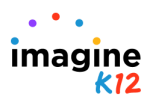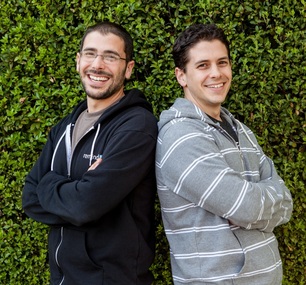by Tim Brady and Geoff Ralston
We are excited to announce the creation of a Start Fund for Imagine K12 companies. Beginning with our fall 2013 cohort, Imagine K12 companies will be eligible to receive $80,000 in convertible debt seed financing upon commencement of the program. This is in addition to the $14k to $20k in funding from Imagine K12.
A fantastic group of people and institutions have agreed to participate in the Start Fund. It is a collection of prominent people and firms from Silicon Valley that understand both the power of great software to change industries and the importance to the nation of improving our K-12 education system. The group includes Yahoo co-founder David Filo, Angela Filo, Y Combinator founder Paul Graham, LinkedIn CEO Jeff Weiner, Chegg CEO Dan Rosensweig, the New Schools Venture Fund, and GSV Asset Management. We are grateful to this group not only for their participation in the fund, but also for the work they have already been doing to improve education.
With the advent of the Start Fund, there will be a change in the timing of our program and how teams are admitted. We will now be holding one program per year, rather than two. The length and content of the program will remain the same; but rather than running programs both in the summer and in the winter every year, we will hold one program each fall. Our next program will start at the beginning of September 2013, and we will admit up to 20 companies.
We are also moving to a rolling admissions process. The application will be opened every February and kept open until either we have funded 20 companies or the summer has ended. We will review applications as they arrive and determine which we would like to interview. Following each interview we will make a decision regarding admission. Once teams are admitted, they are immediately eligible to receive the (up to $20,000 of) Imagine K12 funding. The Start Fund financing will be available once the program starts in September. This year we are beginning the admissions process a bit late, but as of today we will start reviewing applications from those companies that have submitted their applications.
Our fourth cohort of edtech companies is currently finishing up the Imagine K12 program. It has been an exciting journey so far, but the changes described are going to make the future even brighter. Imagine K12 companies have raised more than $30 million dollars in venture financing and are used by thousands of schools around the country and the world. The Imagine K12 Start Fund and the changes described here will give future Imagine K12 startups even more chances to build great businesses. And those great new businesses will play a role in the inevitable transformation of education taking place in the United States and around the world, bringing all children the education they need to reach their potential.
Press Release: Imagine K12 Launches First Ever Start Fund for Educational Technology
A fantastic group of people and institutions have agreed to participate in the Start Fund. It is a collection of prominent people and firms from Silicon Valley that understand both the power of great software to change industries and the importance to the nation of improving our K-12 education system. The group includes Yahoo co-founder David Filo, Angela Filo, Y Combinator founder Paul Graham, LinkedIn CEO Jeff Weiner, Chegg CEO Dan Rosensweig, the New Schools Venture Fund, and GSV Asset Management. We are grateful to this group not only for their participation in the fund, but also for the work they have already been doing to improve education.
With the advent of the Start Fund, there will be a change in the timing of our program and how teams are admitted. We will now be holding one program per year, rather than two. The length and content of the program will remain the same; but rather than running programs both in the summer and in the winter every year, we will hold one program each fall. Our next program will start at the beginning of September 2013, and we will admit up to 20 companies.
We are also moving to a rolling admissions process. The application will be opened every February and kept open until either we have funded 20 companies or the summer has ended. We will review applications as they arrive and determine which we would like to interview. Following each interview we will make a decision regarding admission. Once teams are admitted, they are immediately eligible to receive the (up to $20,000 of) Imagine K12 funding. The Start Fund financing will be available once the program starts in September. This year we are beginning the admissions process a bit late, but as of today we will start reviewing applications from those companies that have submitted their applications.
Our fourth cohort of edtech companies is currently finishing up the Imagine K12 program. It has been an exciting journey so far, but the changes described are going to make the future even brighter. Imagine K12 companies have raised more than $30 million dollars in venture financing and are used by thousands of schools around the country and the world. The Imagine K12 Start Fund and the changes described here will give future Imagine K12 startups even more chances to build great businesses. And those great new businesses will play a role in the inevitable transformation of education taking place in the United States and around the world, bringing all children the education they need to reach their potential.
Press Release: Imagine K12 Launches First Ever Start Fund for Educational Technology


 RSS Feed
RSS Feed